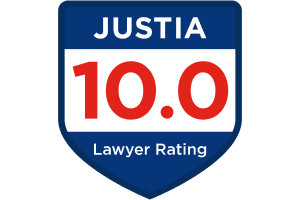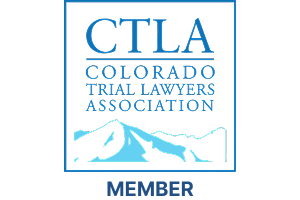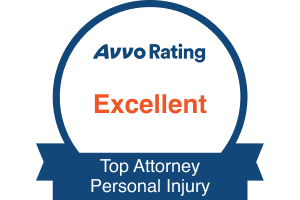Common Injuries from Truck Accidents
Crashes with semis and other heavy commercial vehicles can upend a life in a single moment. The forces involved are far greater than in most car collisions, which means the injuries are often more complex, more expensive to treat, and slower to heal. At Cook Bradford & Levy, Jason Levy and Brian Bradford lead a Colorado based trial team that helps people and families rebuild after serious truck crashes. Our firm represents clients throughout the Front Range and across the state, and offers free consultations from its Lafayette office. Call us today at 303-543-1000.
This page explains why truck crashes cause the injuries they do, the patterns our lawyers most often see, and how Colorado law treats proof of injury and medical costs. It also highlights leading case law that affects how juries evaluate damages. The goal is to give you practical, accurate information you can use as you consider your next steps.
Why Truck Crashes Cause Such Severe Injuries
Even at moderate speeds, a fully loaded tractor trailer can weigh twenty times more than a passenger car. That mass multiplies kinetic energy, which translates to greater crash forces on the human body. National data regularly show thousands of people killed and over one hundred fifty thousand people injured in large truck crashes each year. Injury risk falls most heavily on occupants of the other vehicles.
Colorado’s terrain adds difficulty. Steep grades on corridors like I 70 and U.S. 285, changing weather, and visibility problems from dust or snow can increase the chance of high energy impacts or secondary collisions when a first crash blocks a lane. Cook Bradford & Levy’s own truck safety resources discuss these local risk factors and the types of injuries that follow.
The Injuries We See Most Often After a Truck Crash
Traumatic brain injury
An experienced personal injury lawyer knows that sudden deceleration or a rotational force can stretch and shear delicate brain tissue. People may or may not lose consciousness, and early scans can be normal. Symptoms like headaches, cognitive slowing, memory problems, light sensitivity, irritability, or disturbed sleep often appear in the days that follow. Colorado courts have recognized traumatic brain injury and post traumatic stress disorder as proven consequences of motor vehicle crashes, which reinforces that these harms are real and compensable when supported by competent medical evidence.
Perhaps surprisingly to some, the law does not require a pristine medical history to recover for a brain injury. If a crash aggravated a pre-existing condition, Colorado’s “eggshell skull” doctrine applies. In the 1992 Colorado Supreme Court case, Schafer v. Hoffman, the court explained that a defendant takes the plaintiff as found, which means the at fault party remains responsible for the full extent of injury even when a person was more susceptible to harm. This doctrine is vital in brain injury litigation where prior concussions or migraines are common.
Spinal cord injury and spinal trauma
Truck crashes can cause burst fractures, facet injuries, herniated discs, and damage to the spinal cord. Resulting deficits may include weakness, numbness, bowel or bladder dysfunction, or paralysis. Many clients require surgical stabilization, fusion, or disc replacement, followed by extended rehabilitation. Cook Bradford & Levy’s educational articles discuss the mechanics of spinal trauma and the long term impact these injuries have on work and family life.
Fractures and crush injuries
The mix of forces in a tractor trailer collision often leads to fractures of the pelvis, femur, tibia, ribs, wrists, and facial bones. A crush mechanism can trigger compartment syndrome or require fasciotomies. Orthopedic injuries can be life altering because they limit mobility, delay return to work, and can produce chronic pain that persists long after bones knit. Even so-called simple fractures may create years of limitations for people whose jobs require lifting, standing, climbing, or tool use.
Internal organ damage and internal bleeding
Rapid deceleration can tear the spleen or liver, bruise the lungs, or cause mesenteric injuries that bleed into the abdomen. When the aorta is involved, the situation is immediately life threatening. Timely trauma care saves lives, but survivors often face extended hospitalizations, repeat scans, and restrictions on activity for months. At Cook Bradford & Levy, because of their nature, internal injuries stress the importance of early diagnosis and symptom awareness for people who walk away from the scene yet decline in the hours or days afterward.
Burns, inhalation injuries, and scarring
A truck carries large volumes of diesel fuel and sometimes hazardous cargo. Post impact fires or chemical releases can cause deep burns, airway damage, and disfiguring scars. These injuries demand specialized burn care, pressure garments, and staged reconstruction. They often produce intense pain and emotional trauma, both of which Colorado law recognizes as compensable harms when proven through testimony and medical records.
Amputations and complex limb injuries
High energy crush trauma to hands, arms, or legs may leave surgeons with no choice but to perform an amputation. Even limb salvage can require multiple operations, external fixation, and tendon or nerve reconstruction. While prosthetics can improve a victim’s quality of life, it adds substantial lifetime costs for things like sockets, components, maintenance, and replacements of the artificial limb. When a case involves these needs, our lawyers work with life care planners and rehabilitation specialists to convert medical needs into a concrete and well-supported future damages claim.
Whiplash and soft tissue injuries that are not minor
Insurance companies often minimize whiplash or myofascial injuries, yet many people develop persistent pain, headaches, and functional limits after a violent rear impact from a tractor trailer. The absence of a fracture or a surgical finding does not end the analysis. In Colorado, juries are asked to award the reasonable value of necessary medical care and the full measure of pain, suffering, and loss of enjoyment of life when the evidence supports those losses.
Psychological trauma, including PTSD and depression
Serious crashes are frightening and disorienting. After a heavy truck impact, many clients report nightmares, flashbacks, panic in traffic, irritability, or withdrawal from social life. Colorado courts have recognized PTSD claims arising from crashes when proven with competent evidence. In our cases, treatment records from therapists, psychologists, or psychiatrists, along with testimony from family or friends, can help a jury understand the depth of the harm. Moreover, PTSD is actually a physical impairment in that it physically alters the neurons and brain structure within a victim. It is important to distinguish between purely mental/emotional injuries and physical impairment, because impairment damages are not subject to caps in Colorado.
Injuries unique to children and older adults
Children can suffer brain injuries or fractures that alter development and schooling. Older adults face greater risk of complications from fractures, surgery, and immobility. The thin skull doctrine applies here as well. If a negligent truck driver or company injures a more fragile person like a child or elderly person, the law still holds the driver responsible for the full extent of injury.
How Colorado Law Treats Proof of Injury and Medical Costs
The thin skull rule protects people with pre-existing conditions
As noted above, Schafer v. Hoffman remains the leading case on the thin skull doctrine in Colorado. It teaches that a defendant cannot escape responsibility by saying only a particularly resilient person would have been less harmed. In everyday terms, the at fault party must accept the injured person as found, and must compensate for the aggravation of any pre-existing condition the crash worsened.
Medical bills, the collateral source rule, and what juries may hear
Two main Colorado Supreme Court decisions shape how medical expenses are presented to a jury. In Volunteers of America v. Gardenswartz, the court held that the collateral source statute does not allow a negligent party to reduce a jury’s award by pointing to insurance discounts or write offs. Later, in Wal Mart v. Crossgrove, the court held that evidence of the lesser amount actually paid by a collateral source is inadmissible at trial to challenge the reasonable value of necessary medical care. These cases work together to keep collateral source payments and write downs away from the jury, and they explain how post verdict setoffs may work under the statute. At Cook, Bradford & Levy, we understand that insurance companies often take advantage of un-represented victims to convince them that the at-fault is only responsible for co-pay or the adjusted bill amount.
There are narrow exceptions that arise in specialized contexts, such as certain workers’ compensation subrogation situations or disputes about medical lien companies that fall outside the collateral source rule. Those exceptions are not the norm in truck crash cases, but experienced lawyers like Jason and Brian at Cook, Bradford & Levy will watch for them and address them if they surface.
Proving future care and life care needs
People with serious truck crash injuries often require a long horizon of care. That can include follow up surgeries, injections, cognitive therapy, psychological counseling, mobility aids, prosthetics, medications, and home or vehicle modifications. The law permits recovery of the reasonable value of necessary future medical care when supported by evidence. Our team documents these needs through treating providers, independent specialists, and where helpful, a formal life care plan that translates medical recommendations into a practical, priced roadmap.
Pain, suffering, and enjoyment of life
Colorado allows recovery for noneconomic losses like physical pain, mental suffering, inconvenience, emotional distress, and loss of enjoyment of life. The legislature has set caps on noneconomic damages, and those caps were increased after years of negotiating with interested parties. Although caps are not injury specific, they frequently apply in truck injury cases and can influence strategy on settlement and trial. Wrongful death caps increased markedly as well, which matters when a truck collision results in a fatality.
Economic losses and work life impact
Truck crash injuries often interrupt earnings and disrupt careers. Some people never return to their prior jobs. Others return at reduced capacity or with limitations that truncate advancement. Colorado juries may award lost wages and lost future earning capacity when the evidence supports those losses. Economists can estimate work life expectancy, fringe benefits, and household services losses.
How We Prove Injury and Causation in Truck Cases
Fast, thorough evidence preservation
Trucking companies and their insurers often deploy rapid response teams within hours. Our lawyers send preservation letters and move quickly to secure the driver qualification file, electronic logging data, dispatch and route information, GPS breadcrumbs, event data recorder downloads, maintenance records, drug and alcohol testing, and photographs or video. That early work is essential when the injury picture is severe, because proof of negligence and causation supports the entire damages presentation.
Clear, credible medical storytelling
Jurors respond to explanations that make sense. In a brain injury case, for example, we connect mechanisms of injury, clinical findings, and functional limitations to produce a clear through line from crash to consequence. In a spinal case, we align imaging, exam findings, and surgical recommendations with reported pain and activity limits. Where a crash aggravated a pre-existing condition, we use Schafer’s thin skull doctrine and treating provider testimony to demonstrate how the event accelerated or worsened what had been a manageable issue at a previous baseline.
Respectful proof of psychological injury
For PTSD and depression, we rely on qualified mental health professionals, structured assessments, and collateral testimony from family, friends, and co workers. The aim is not to exaggerate, but to be accurate and humane. Colorado courts have recognized these harms in crash litigation when supported by reliable evidence, and our task is to present that evidence clearly and respectfully.
How Cook Bradford & Levy Can Help You
Our team will investigate your case quickly, preserve critical data, gather the medical and economic proof required for a strong damages case, and prepare every file as if trial were likely. That preparation often drives settlement. When settlement is not enough, the firm presents clear, respectful evidence to juries that explains both the mechanism of injury and the human cost. Clients work directly with either Brian or Jason, and fees are paid on a contingency basis, which aligns the firm’s interests with yours. Call us today at 303-543-1000 for a free consultation!









